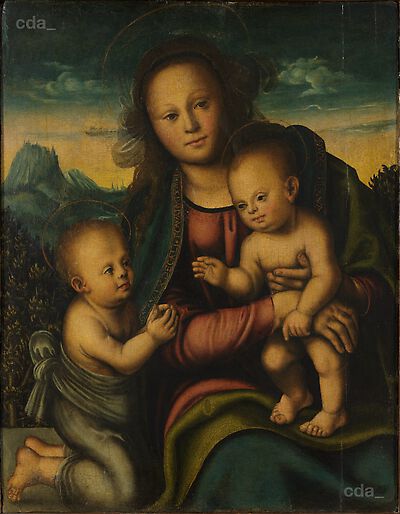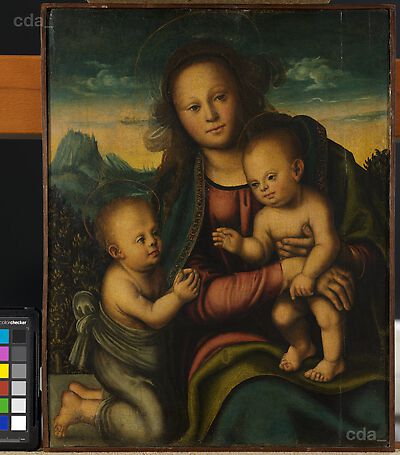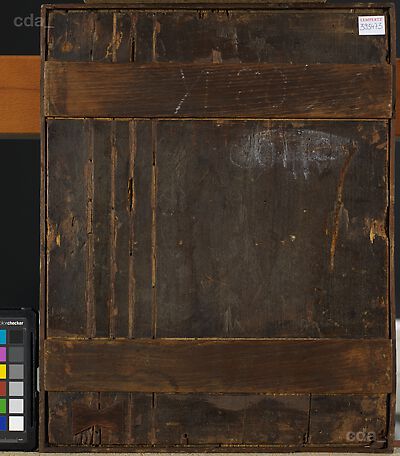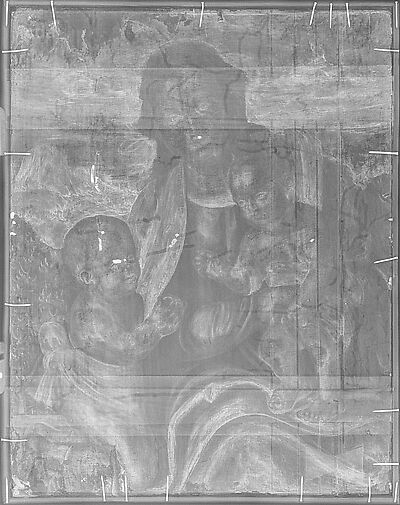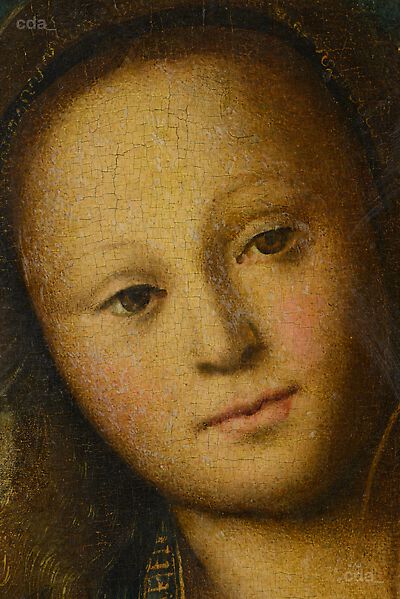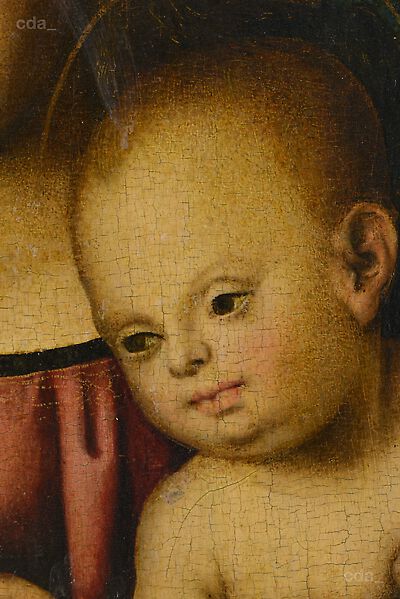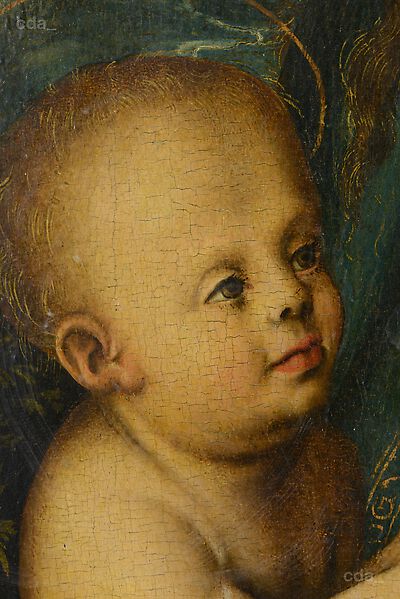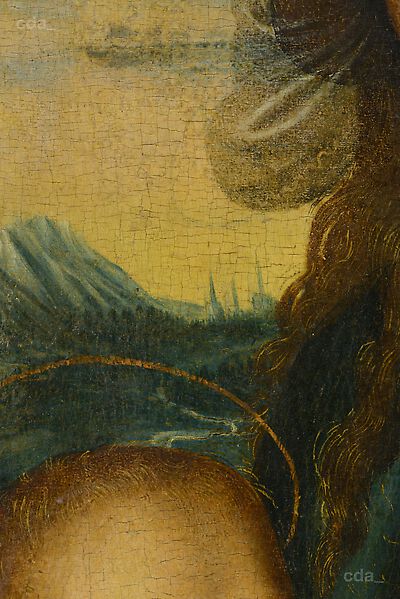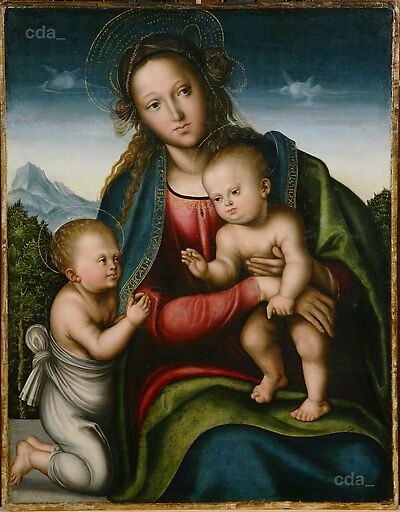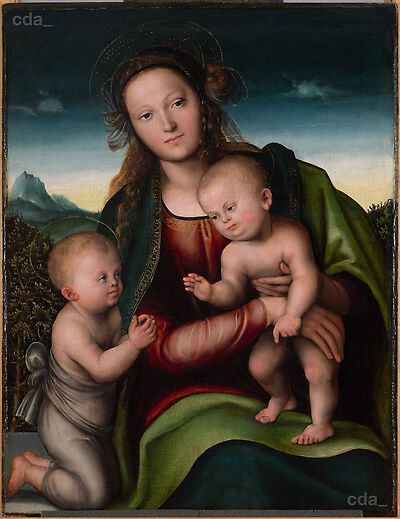XRF analysis (Niton XLt) was used to detect the following elements and by comparing their optical characteristics the pigments were identified:
Blue: Cu, Pb, Ca, Fe
Pb: lead white; Cu: blue pigment containing copper; Fe: iron oxide/ ochre; Ca: chalk/ gypsum?
Blue and yellow: Cu, Pb, Ca, Fe, Hg, (Sn)
Pb: lead white; Pb, Sn: lead tin yellow; Hg: vermilion; Cu: blue pigment containing copper; Fe: iron oxide/ ochre; Ca: chalk/ gypsum?
Red: Pb, Ca, Fe, Zn, (Hg, Cu)
Pb: lead white; Zn: siccative?/ zinc white (retouching)?; Hg: vermilion; Cu: blue pigment containing copper; Fe: iron oxide/ ochre; Ca: chalk/ gypsum?
Green: Cu, Ca, Pb, Fe, Sn
Pb: lead white; Pb, Sn: lead tin yellow; Cu: green pigment containing copper; Fe: iron oxide/ ochre; Ca: chalk/ gypsum?
Grey: Ca, Pb, Ti, Fe, Zn, Hg, (Cu)
Pb: lead white; Zn: siccative?/ zinc white (retouching)?; Ti: titanium white (retouching?); Hg: vermilion; Cu: blue and green pigments containing copper; Fe: iron oxide/ ochre; Ca: chalk/ gypsum?
Yellow: Pb, Ca, Sn, Cu, (Hg, Zn)
Pb: lead white; Zn: siccative?/ zinc white (retouching)?; Pb, Sn: lead tin yellow; Hg: vermilion; Cu: blue and green pigment containing copper; Ca: chalk/ gypsum?
The faces were laid in with a light admixture of lead white and vermilion. Shadows were modulated with grey paint and semi-transparent brownish-black glazes, some passages were accentuated with red paint, and highlights were applied with paler flesh paint. The eyes including the eyelashes and highlights were rendered with confidence and without corrections. In addition to white the eyeball also contains a considerable amount of blue pigment (azurite). The hair was applied with a fine tipped brush, using lead tin yellow to create different colours of varying intensity.
The sky and the landscape in the background were laid in with grey paint (white and black pigments), and a gradual tonal gradation can be observed between the zenith (grey-black) and the horizon (white). Subsequently a coarsely ground and intensely coloured azurite (XRF) was used in varying admixtures with lead white (XRF). It was applied with daubs and strokes. The horizon was brightened by using a pink tone that passes over into lead tin yellow (XRF). The clouds were applied wet-in-wet and the contours were blended with a soft brush. The group of trees in the middle ground was partially executed over a black underpaint employing various green admixtures and drawn together with a final glaze. The modulation of the red robe was executed over a light red underpaint (lead white, vermilion, red iron oxide?) using a red lake. The haloes and the borders of the veil, the coat and the dress were rendered in a reddish-yellow paint (lead tin yellow). There were no obvious changes made to the composition during the painting process, nor is a signature or a date visible on the painting.
[unpublished examination report, Heydenreich 01.10.2019]
